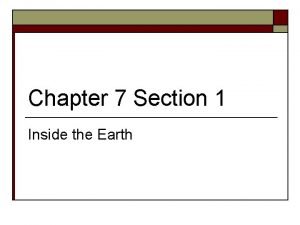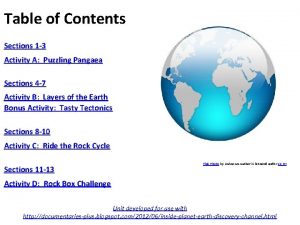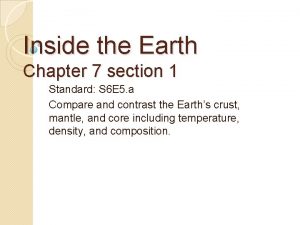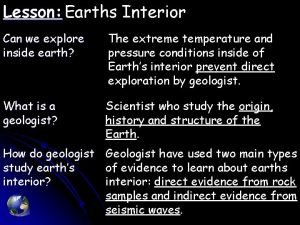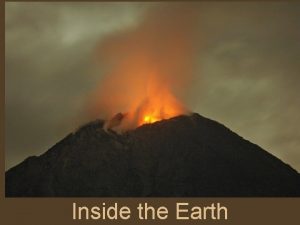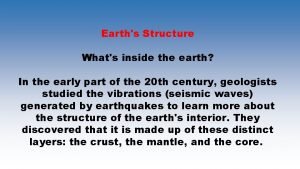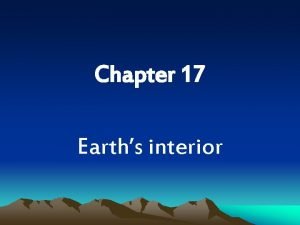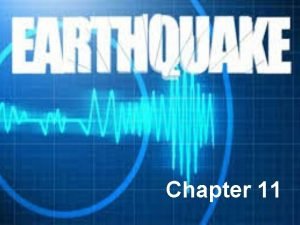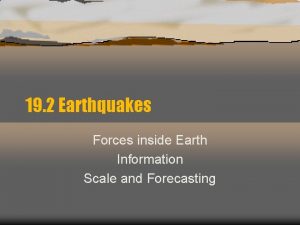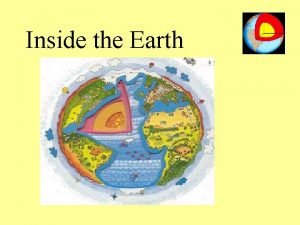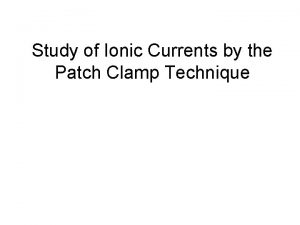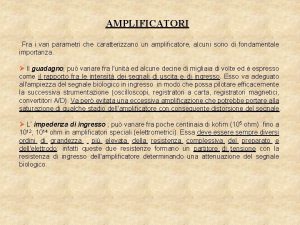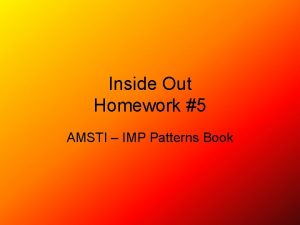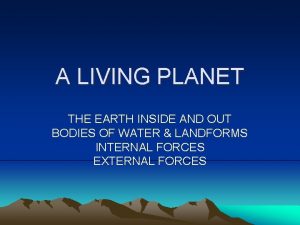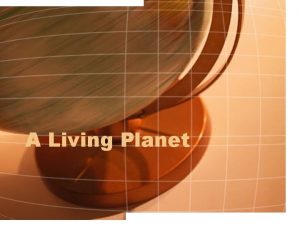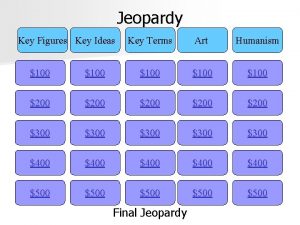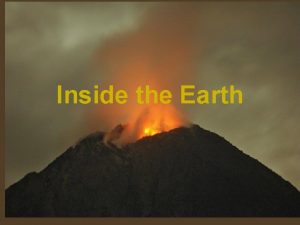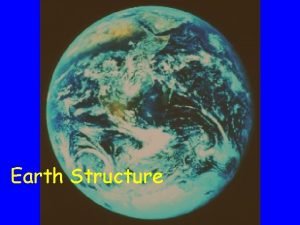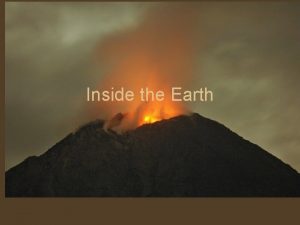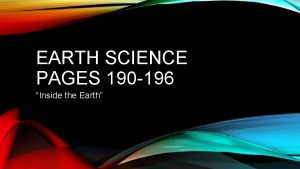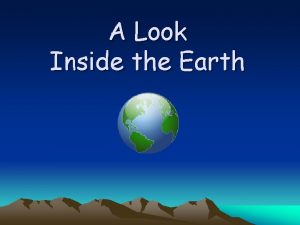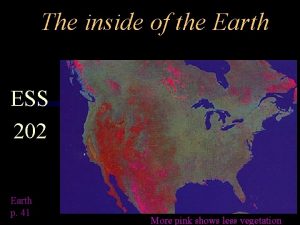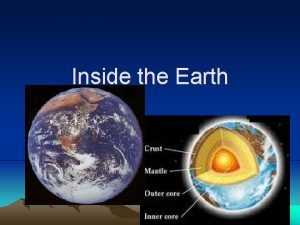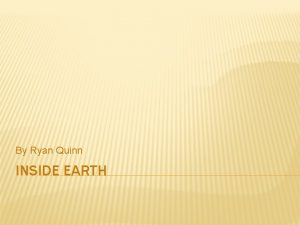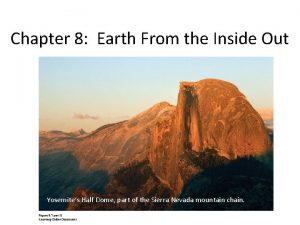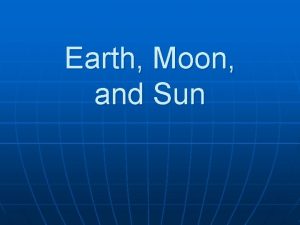Earth Inside and Out Key Ideas How is
























- Slides: 24

Earth: Inside and Out

Key Ideas • How is the Earth’s interior structured? • How has the appearance of the Earth changed over time? • What geologic Features are common near tectonic plate boundaries?

Where did the Earth come from? • http: //www. mnh. si. edu/earth/main_frames. ht ml

Geologic Time • http: //www. eram. k 12. ny. us/education/compon ents/docmgr/default. php? sectiondetailid=17500 &fileitem=6776&catfilter=449&PHPSESSID=f 7 224 dbc 8 e 13359 ed 2 bb 68 e 998 eed 97 a

Earth’s Interior • Three parts: 1. Crust 2. Mantle 3. Core

Crust • Only makes up 1% of Earth’s mass. • Continental crust averages about 12 -25 miles deep. • Oceanic crust averages about 3 -5 miles deep.

Mantle • • • Lays beneath the crust. Denser than the crust. Makes up 80% of the Earth’s interior. About 1800 miles deep. Humans have never drilled all the way to the mantle.

Core • • • Core makes up 19% of Earth’s mass. Composed mainly of iron and nickel. Two layers – inner and outer core. Inner core – solid metal Outer core – liquid metal • http: //www. mnh. si. edu/earth/main_frames. ht ml

Hot, Hot!!! • The temperature of the Earth increases with depth. • The Earth’s interior contains radioactive isotopes. • As uranium, thorium and potassium decay, they release energy that is stored in the core.

Plate Tectonics • Alfred Wegener hypothesized that all of the continents might have been part of one landmass in the past before they drifted apart.

Plate Tectonics • The continents fit together like pieces of a puzzle. • The landmass was called Pangaea.


Plate Tectonics • Fossil record showed that the continents were at one time, one landmass.

Plate Tectonics • How did the continents get to their current location? ? ?

Continental Drift • Continental Drift Theory is theory that the Earth’s surface is made up of large moving plates.

• http: //www. ucmp. berkeley. edu/geology/tecall 1 _4. mov

Continental Drift • Where’s the evidence? • Changing magnetic fields discovered on either side of the Mid-Atlantic Ridge. • Suggests that the crust was moving away from the plate boundary in both directions.


Continental Drift • Lithosphere = crust + upper portion of mantle • Lithosphere is made up of 8 large plates(and 9 smaller plates) called tectonic plates. • Tectonic plates move from 1 -10 cm per year.


What makes tectonic plates move? • Hypothesis One – convection currents in the asthenosphere , the hot, plastic portion of the mantle moves the plates. • Hypothesis Two – plates are driven by the force of gravity acting on their own massive weight.



• http: //www. mnh. si. edu/earth/main_frames. ht ml
 Chapter 7 section 1 inside the earth answer key
Chapter 7 section 1 inside the earth answer key Three compositional layers of the earth
Three compositional layers of the earth Inside planet earth video worksheet answers
Inside planet earth video worksheet answers Chapter 7 section 1 inside the earth answer key
Chapter 7 section 1 inside the earth answer key 1d one thing
1d one thing Inside out vocabulary
Inside out vocabulary Type your answer here.
Type your answer here. Inside out and back again vocabulary
Inside out and back again vocabulary Why is the inside of the earth hot
Why is the inside of the earth hot Dense ball of solid metal
Dense ball of solid metal Whats inside the earth
Whats inside the earth Produced from the heat inside the earth
Produced from the heat inside the earth Forces inside earth
Forces inside earth Forces
Forces What is inside of earth
What is inside of earth Patch clamp amplifier axon
Patch clamp amplifier axon Instinct theory inside out
Instinct theory inside out Inside out by francisco jiménez
Inside out by francisco jiménez Mothering from the inside out
Mothering from the inside out Inside out patch clamp
Inside out patch clamp Inside out
Inside out Organizing from the inside out
Organizing from the inside out Inside out guessing the feelings
Inside out guessing the feelings Inside out idea generation
Inside out idea generation Shodor function machine
Shodor function machine

